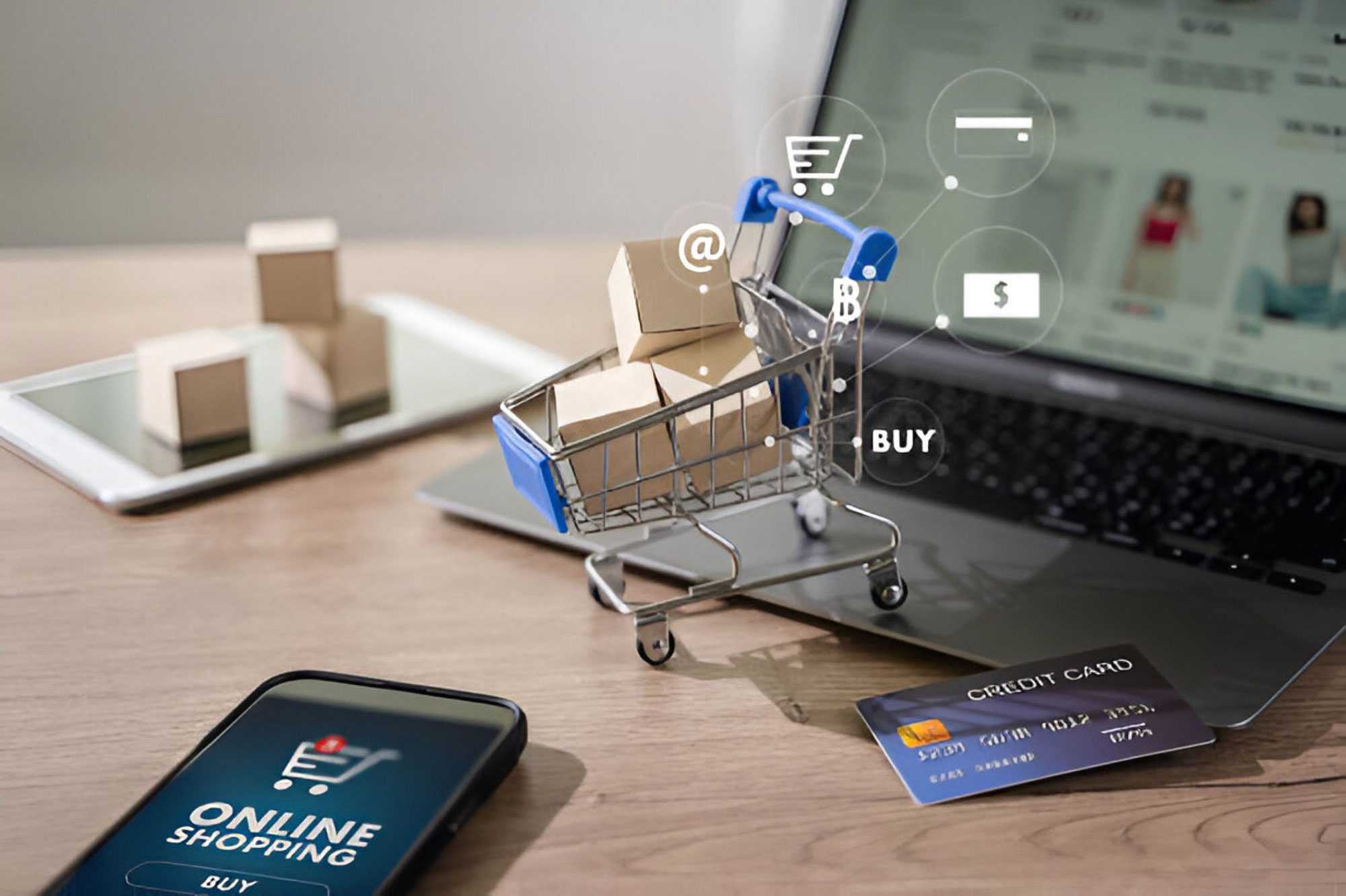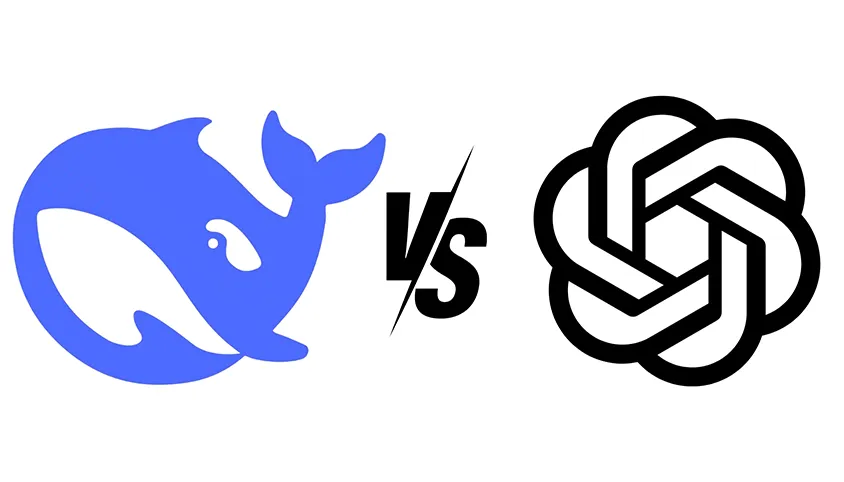-
Find Services
-
Generative AI
-
Blockchain Technology
-
Mobile App Development
-
Software Development
-
Web Development
-
E-Commerce Development
-
App Designing (UI/UX)
-
Web Designing (UI/UX)
-
IoT Development
- Industry
- Manufacturing
- Health Care
- Logistics
- Automotive
- Testing Services
- DevOps
- Game Development
- Robotic Process Automation
- AR & VR Development
- Browse All Services
-
Generative AI
-
Find Agencies
- Submit Reviews
- Research & Surveys

Building an eCommerce website is like setting up a physical store in a digital world. The difference? Your “storefront” must attract and engage visitors 24/7. To succeed, your site must have features that create an excellent customer experience, build trust, and make shopping seamless. In this blog, we’ll walk through five eCommerce features that every online store needs to thrive. Whether you’re starting from scratch or looking to improve your website, these essentials will be your map towards success.
1. Mobile-Friendly Design: The Non-Negotiable
In 2025, more than half of all eCommerce sales are made on mobile. A mobile-friendly design isn’t nice to have, it’s necessary. Your website needs to scale with screens of all shapes and sizes so that the visitor can browse, add products to their cart, and check out easily on his phone.
Here’s why:
- A better user experience: Buyers stay longer and navigate deeper.
- SEO benefit: Search engines reward mobile-friendly sites.
- More conversions: Seamless mobile experience translates directly into more sales.
Use responsive design methodologies, and test your website on different devices. This means you won’t miss out on sales because of a site that lacks great mobile functionality.
2. Intuitive Navigation: Guiding Customers Seamlessly
Walk into a store without signs or directions. Frustrating, right? Your online store is not any different. Intuitive navigation ensures shoppers find what they’re looking for without confusion.
Online store essentials for reaching the correct landing page include:
- A clear menu with well-defined categories.
- A powerful search bar for quick product discovery.
- Breadcrumb trails so users can retrace their steps easily.
Pro tip: Categorize your products to make sense logically. For instance, if you are selling shoes, you categorize them into men’s, women’s, and kids’. Intuitive navigation improves customer experience and keeps users from leaving in frustration.
3. Secure Payment Options: Building Trust
Safety will always be a top concern of e-commerce buyers. Online consumers require feeling secure over the sensitivity of their information. This confidence through safe payment solutions develops trust and boosts conversion rates.
So, what’s most important:
- Apply SSL certificates to your users’ data.
- Have easy-to-spot payment brands including Visa, PayPal, Stripe
- Variety in payments, that would involve credit cards, e-wallets, Buy Now Pay Later.
You should also display trust badges on your checkout page. These visual indicators help reassure the customer that their transactions are safe and reduce the rates of cart abandonment.
4. A User-Friendly Shopping Cart and Checkout Process
This is where visitors become buyers. All your hard work can be undone if your shopping cart and checkout process are clunky or confusing.
Optimize this step with these eCommerce features:
- A persistent cart that saves items for later.
- Clear pricing with no hidden fees.
- Guest checkout options for faster purchases.
Make sure there is an ease in editing the cart, applying discounts, and shipping options. The simpler it is, the less likely the user will drop the cart.
5. Search Engine Optimization (SEO): Getting Found Online
Even the best-designed site is worthless if nobody finds it. SEO helps you get more visitors by ranking higher in search engine results. It’s a game-changer for eCommerce.
Focus on these areas:
Keyword optimization: Use terms like “affordable sneakers” or “eco-friendly bags” in your product descriptions.
High-quality product pages: Write detailed descriptions, use clear images, and include customer reviews.
Voice search readiness: Adapt to how people speak when searching, such as “best running shoes under $50.” Stay updated on trends like AI-powered search and Core Web Vitals, as they directly impact your visibility. A well-optimized site ensures consistent organic traffic, reducing your dependency on paid ads.
Wrapping Up
These are the five eCommerce features of an excellent online store:
- Mobile-friendly design.
- User-friendly navigation.
- Secure payment options.
- Convenient shopping cart and checkout.
- Strong SEO practices.
Each plays a part in adding more ease to the experience of your customer and selling them. Creating the perfect online store is a process by focusing on online store essentials rather than just building a website.
For more information about optimizing an eCommerce website, go to Right Firms for the best developers and digital gurus on the net.
Categories
Tags
Submit Your Inquiry
Related Posts

Top 10 E-Commerce Tools to Boost Your Online Business
In the fast-moving digital marketplace, running an effective online business means more than having a user-friendly website and several great products. To stay ahead in the game, it is essential to use the appropriate e-commerce development tools, which help simplify processes, improve customer experiences, and advance e-commerce growth. This blog will explore the top 10 business tools for e-commerce, which will propel your online store to performance maximisation and increase profit. 1. Shopify – The All-in-One E-Commerce Platform Shopify is a top contender in e-commerce development. This powerful platform offers everything you need to set up, run, and grow your online store. Shopify ensures your store is functional and visually appealing with customisable themes, integrated payment gateways, and seamless mobile optimisation. Key Features: Easy product management Built-in SEO tools for online store optimisation 24/7 customer support Whether you are a small business or a growing brand, Shopify adapts to your needs and empowers you to scale effortlessly. 2. WooCommerce – Flexible E-Commerce for WordPress Users If you already use WordPress for your website, WooCommerce is the ideal solution for adding e-commerce growth capabilities. This plugin transforms your WordPress site into a fully functional online store, offering flexibility and scalability for businesses of all sizes. Key Features: Open-source platform with extensive customisation Hundreds of free and paid extensions Integration with popular digital sales tools WooCommerce is perfect for businesses that want complete control over their store’s design and functionality. 3. BigCommerce – Enterprise-Level Functionality BigCommerce is a comprehensive platform for businesses seeking massive growth in e-commerce. It is ideal for enterprises expanding into the international market as it is highly scalable, secure, and robust. The significant highlights include: Multi-channel selling through Amazon and eBay Crystalline analytics and reports The checkout experience can also be customised BigCommerce allows you to focus on scaling up your business while letting the platform handle technical complexities. 4. Klaviyo – Powerful Email Marketing for E-Commerce Email marketing is a pillar of any successful e-commerce strategy and the one area in which iteration occurs. This tool excels at crafting hyper-personalized email campaigns that earn engagement and drive conversions. Key Features: Behavior-based automation Advanced segmentation for targeting and precision marketing Analytics to measure campaign performance Integrating Klaviyo into your online store will turn your email marketing into a moneymaker. 5. Semrush – Optimize Your Online Presence A well-optimized online store is key to organic traffic and long-term success. Semrush is a versatile tool that helps you research keywords, analyse competitors, optimise content for better search engine rankings, and more. Major features are Comprehensive SEO audits Insights into the competitor's strategy Content marketing and backlink analysis A web tool like Semrush helps ensure your website stands ahead in the big e-commerce competition landscape. 6. Stripe – Simplified Payment Processing Stripe is the best solution for smooth transaction processing while maintaining the highest levels of security in online store optimisation. It can be used for multi-currency payments and multiple payment methods, which is helpful for a business that reaches various parts of the world. Major Features Easy integration with e-commerce Fraud prevention tools Detailed analytics about payments Stripe improves customer experience by having hassle-free, secure checkout. 7. HubSpot – CRM for E-Commerce Businesses This stands out as one of the most valuable business tools for e-commerce. It enables features that streamline customer relationship management, benefiting businesses that want to enhance customer engagement and retention. Key Features Unified customer data for personalised experiences Integration with popular digital sales tools Analytics to track customer journeys With HubSpot, you can create meaningful connections with your customers, driving e-commerce growth. 8. ShipStation – Streamline Your Shipping Process Fast and efficient shipping is essential for customer satisfaction. ShipStation simplifies order fulfilment by integrating with your e-commerce platform and smoothing shipping. Key Features: Multiple carriers are supported, such as FedEx and USPS Automated tracking updates for the customers ShipStation offers discounted rates for shipping ShipStation will help you save time and money while amazingly delighting your customers by automating your shipping operations. 9. Canva – Create Stunning Visuals Visual content helps attract customers to your store and gives a glimpse into the products on sale. Canva's design platform enables users to produce impressive graphics for their websites, social media, or email marketing. Key Features User-friendly interface Drag-and-drop feature More than a thousand templates Helpful tools to make product images, banners, and ads. Elevate your branding through Canva: no professional skills are required to change the look and feel of your store. 10. Hotjar – Gain Insights into Customer Behavior Hotjar offers the necessary data to analyse your online store and customers' interactions with your website. This tool uses heat maps and session recordings to analyse user behaviour. Its key features are: Visual view of customer activity Feedback tools that help in gathering insights Conversion funnel tracking Hotjar empowers you to identify pain points in your customer journey and make improvements that drive conversions. Why These Tools Are Essential for E-Commerce Growth? Each tool addresses a different aspect of running an effective online business, from website development and payment processing to marketing and customer engagement. Integrate these e-commerce business tools into your strategy for online store optimisation, improved customer experience, and other opportunities for further growth in the e-commerce domain. Final Thoughts Running an online business constantly demands adapting and innovating. The right digital sales tools simplify your operations and help you gain the competitive edge you need to thrive in today's crowded market. Whether you are a beginner or looking to scale, all the above tools help streamline your processes, engage your audience, and boost your sales.

Top 10 Web Design Mistakes to Avoid
The process of creating a great website is a very detail-oriented process involving design principles that improve user experience. Avoiding common pitfalls will ensure that visitors have a seamless and engaging interaction with your site. Here are the top 10 web design mistakes to avoid: 1. Slow Loading Speed A slow website is frustrating to users, and hence, more bounces occur. Slow loading speeds are caused due to bulky media files, older code, and too many plugins. This website can significantly improve by optimizing images and videos, compressing code, and utilizing browser caching. 2. Non-Responsive Web Design As more people start using mobile devices, a non-responsive design that is not adapted to the screen sizes may lose access to a substantial audience. By adopting responsive design, your website will be able to function across all devices and, hence, enhance user satisfaction. 3. Unclear Communication & Navigation Complicated layouts and poor communication can confuse visitors, causing them to leave without understanding your site's purpose. Clear, intuitive navigation and straightforward messaging are crucial for retaining user interest. 4. Lack of Clear Call to Action (CTA) CTAs help guide users toward the desired actions, such as subscribing or purchasing. Vague or missing CTAs lead to missed opportunities and lower conversions. Ensure your CTAs are prominent, specific, and compelling to drive user engagement. 5. Poor Accessibility Overlooking accessibility will exclude users with disabilities from reaching your site and can possibly infringe on legal standards. Typical problems are poor color contrast and a lack of alternative text for images. Conformity to WCAG makes sure that a website is inclusive. 6. Cluttered Interface An over-packed interface with too many details or numerous elements might even confuse a person, rendering focus on actual important content quite unattainable. Clear simplicity makes a clean interface easier for customers to work within, improving customer experience. 7. Unusable Design Elements Using mismatched images, fonts, or icons can break the visual harmony of your site and make it disjointed for users. Consistency in design elements on all pages gives a coherent and professional look. 8. Non-Scannable Text Unformatted large blocks of text are unattractive to readers and deter them from reading your content. Using headings, bullet points, and short paragraphs makes the content more scannable and allows users to find the information they want. 9. Poor search functionality An ineffective search feature can make users frustrated in searching for specific information, which they might abandon your site for. Adding a robust search function with filters and predictive text can enhance usability and keep the user engaged. 10. Ignoring User Feedback Disregarding user feedback can lead to missed opportunities for improvement. Regular solicitation and analysis of feedback help identify pain points and areas for enhancement, ensuring your website evolves to meet user needs. Avoid these common web design mistakes, and you will create a user-friendly website that will communicate your message effectively and bring about the success of your business.

Top 10 Web Design Mistakes to Avoid for a Better User Experience
When it comes to building a website, the design can make or break its success. Even small web design errors can lead to poor user experience, high bounce rates, and lost business opportunities. So, whether you’re working on a personal project or developing a website for your business, it's crucial to avoid common mistakes that can negatively impact your site’s usability and performance. In this blog, we’ll explore the top 10 web design mistakes to avoid to ensure your website delivers the best possible experience for your visitors. 1. Slow Loading Speed Among the most common web design errors, slow loading time is a prominent one. Websites that take a long time to load frustrate users and often make them leave before even looking at the content. Google reports that 53% of mobile users abandon a site if it takes longer than 3 seconds to load. Avoid this by optimizing your website images, eliminating unused plugins, and perhaps using a content delivery network (CDN) to make your site faster. A faster website generally leads to better user experience and rankings in search engines. 2. Poor Mobile Responsiveness In today's world, most people browse the web on their smartphone or tablet rather than on desktop computers. A website that is not mobile friendly alienates a huge portion of your audience. This may very well be a huge mistake as your visitors will leave your website if they have to zoom or scroll horizontally to find content on your website. Responsive web design solves this problem. It will make the site adapt directly to multiple screen sizes to ensure better user experience on different devices. 3. Difficult Navigation Navigation is a key to a great user experience. If users are unable to find what they are looking for quickly, they may leave your site. Complicated menus, unclear labels, or too many options can confuse visitors. Your website should have a simple and intuitive navigation structure. Use clear and concise labels for menu items, and ensure that the most important pages are easy to access. A simple navigation system will lead to better engagement and enables users to find information faster. 4. Cluttered Interface A cluttered, overcrowded website will overwhelm the visitor and distract them from important information. Clear and simple web design should be at the forefront of every web design. Do not pack too many elements onto a page. Create a clean layout with enough white space to improve user experience. Use hierarchy effectively by contrasting colors and size to highlight the most important elements, such as calls-to-action (CTAs), so that visitors understand what to do next. 5. Unclear Call to Action (CTA) Calls-to-action are very critical to take users through in terms of making them purchase, signing up for the newsletter, or contacting them. Lack of or poorly worded CTA makes it among the worst website design mistakes. Make sure your CTAs stand out, are direct and intuitive. Use words in active voice like "Buy Now," "Get Started" or "Subscribe Today". Position CTAs on areas where they will easily view without cluttering up a page. 6. Not Prioritizing Accessibility Another major mistake in web design is not considering accessibility for people with disabilities. Websites that aren’t accessible to everyone can alienate a large audience and even result in legal issues. Follow web accessibility guidelines (WCAG) to ensure your website is usable for people with visual, auditory, and motor impairments. This includes things like adding alt text to images, ensuring good contrast for readability, and making sure your site works well with screen readers. 7. Using Too Many Fonts Fonts can help set the tone of your website, but using too many types will just give it a disjointed, chaotic look. Combining fonts can simply be distracting and make it harder for users to read your content. Use no more than two or three fonts. Select one for headings and another for body text, and ensure that they complement each other. A consistent font scheme makes your site look more professional and improves readability. 8. Ignoring SEO SEO is also something that is often left out of web design. But in reality, this is what drives traffic to your site. If your site is not optimized for search engines, it won't be found in the search results. Thus, potential visitors will never find it. Ensure that your website design is SEO-friendly with proper HTML tags, images optimized for faster loading, and keyword inclusion. Mobile optimization and clean, readable URLs also enhance better search engine rankings. 9. Overcomplicating Design with Flash Flash was once a thing in websites, but this is some of the many reasons not to use it anymore: it decreases your website's performance and its non-support by all devices from mobile phones on. There isn't much usability for those using the web today. Do not use Flash, but apply more to HTML5, CSS3, and JavaScript elements of interaction. These allow more seamless performance, faster loads, and greater compatibility than flash technology. 10. Lack of Consistent Branding Your website should be an expression of your brand identity, meaning it should use consistent colors, fonts, and imagery aligned with your brand. Inconsistent branding confuses visitors and hurts your credibility. Keep it consistent. Make a style guide on your website to keep the most essential elements in harmony as it would with the branding voice and aesthetic. Consistency also makes trust and recognition for your brand happen. Conclusion Building a website is more than just a technical process. It’s about creating a seamless and enjoyable experience for your visitors. By avoiding common web design mistakes like slow loading speeds, poor navigation, and unclear CTAs, you can ensure that your website is user-friendly, accessible, and effective. Remember, web design isn’t just about aesthetics—it’s about functionality and user experience. So, focus on simplicity, clarity, and usability, and your website will thrive. By staying clear of these web design errors, you’ll not only enhance user experience but also improve your chances of success online. If you want to avoid these pitfalls, partnering with a professional web design agency can help you create a website that meets the highest standards of design and functionality.







